Tourmaline
A silicate mineral of very complex chemical composition with isomorphous replacement. Tourmaline occurs in many colours and is a very popular gem.
Tourmaline shop
Origin of name: from the Singhalese word turamali, which means "stone of mixed colour". However, in Sri Lanka this name was used other gemstones as well, e.g. for Zircon.
Synonyms and trade names: apart from the scientific names for tourmaline species there is a plethora of trade names for differently coloured varieties. The most common names are rubellite for pink and red tourmalines, verdelite for greens and indigolite for blue stones. Green tourmaline discs with a red rim are commonly called watermelon tourmaline.
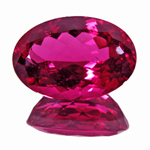
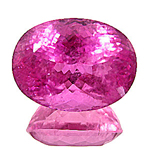
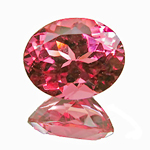
Rubellites from Brazil, Pakistan and Nigeria
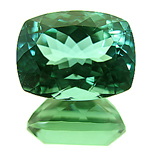
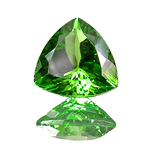
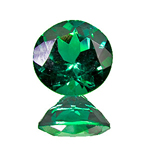
Verdelites from Africa and Brazil
Chrome tourmalines are a specialty amongst the verdelites. They only occur in East Africa and owe their attractive colour to traces of chromium and vanadium.
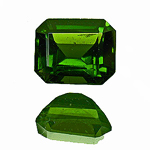
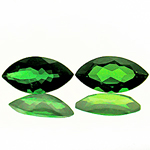
Chrome tourmalines from Tanzania
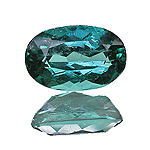
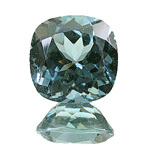
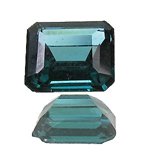
Indigolite from Namibia
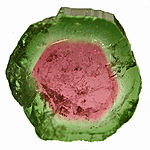
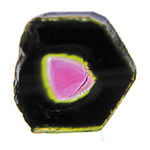
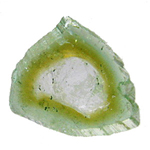
A watermelon tourmaline from Brazil and
2 tourmaline discs from Madagascar and Pakistan
For some time the so-called Paraïba tourmalines were discussed controversially.
In 1989 exceptionally vivid tourmalines were discovered in the Brazilian federal state of Paraïba. From a mineralogical viewpoint they belonged to the Tourmaline species of Elbaїte, albeit (pardon the pun) with a copper content of up to 2.3%, which is responsible for the exciting colours of these gems.
Paraïba-type tourmalines.
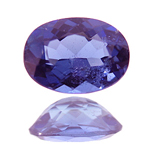
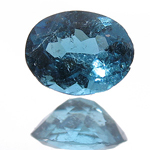
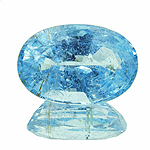
2 Paraïba tourmalines and a Paraïba-type tourmaline from Moçambique (right)
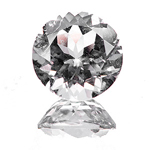
Colourless tourmaline is called achroite
Multicoloured tourmalines are common. Fine specimens of intense colour and with clear divisions command high prices amongst connoisseurs.
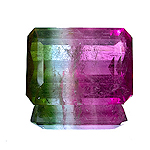
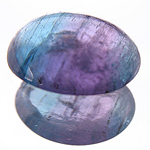
A tri-colour tourmaline of selected quality and a very rare bi-coloured Paraïba cabochon
Tourmaline cat's eyes in green and pink are also common.
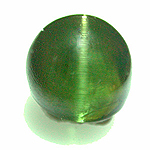
Can be confused with: tourmaline occurs in all colours and can be confused with many other gems. However, due to it's optical and physical properties, like strong pleochroism and strong birefringence, identification is usually straightforward.
Localities: tourmaline is found on all continents. Mindat.org lists more than 8600 locations.
Handling: most tourmaline is easy to work with. Some tourmalines, however, are very brittle and some are sensitive to acids. So, to be on the safe side, tourmaline should not be cleaned ultrasonically and be kept out of galvanic baths.
Do note that many tourmalines are heat treated at comparatively low temperatures of 450 to 600°C and thus should be protected from high temperatures during repair, to avoid unwanted colour change.
Worth knowing: tourmalines are piezo-electric. Perportedly Dutch sailors - the Dutch were amongst the first to import tourmalines into Europe from what today is Sri Lanka - used tourmaline crystals as Aschetrekker (ash pullers) to remove ash from their smoking pipes.
Tourmaline shop
Gemmological Properties of Tourmaline
Tourmaline chemistry is very complex due to isomorphous replacement. The general structural formula is
XY3Z6[(BO3)3T6O18(OH,O)3(OH,F,O)] X = (Ca,Na,K) Y = (Mg,Li,Al,Mn,Fe2+,Fe3+,V,Cr,Ti,Cu) Z = (Al,Mg,Cr,V,Fe3+,Ti) T = (Si,Al,B,Be)
 Deutsch
Deutsch